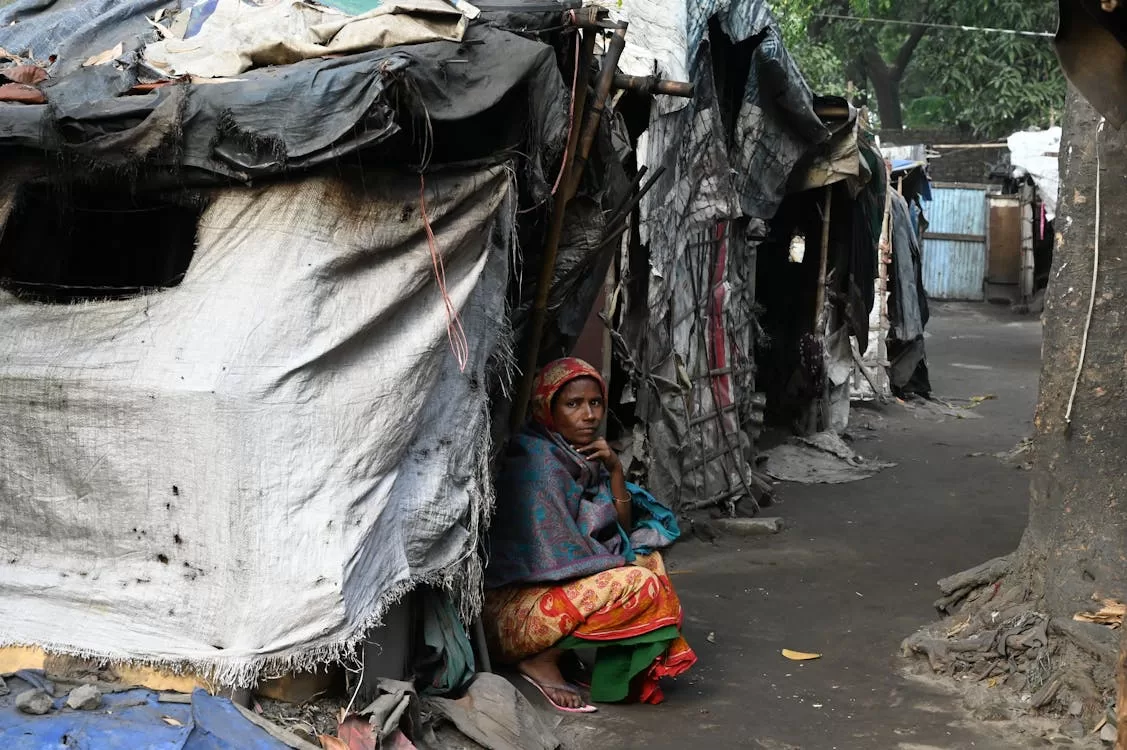Myanmar’s poverty situation is dire at present. The United Nations Development Programme (UNDP) estimates that Myanmar’s economy has been heavily affected by the COVID-19 pandemic and later the political turmoil which took place after the military seized power in 2021. By early next year, half of Myanmar’s population will live in poverty conditions, roughly double the numbers of five years ago. How can we help? What information do we need?
Myanmar Is facing multiple challenges
Several external and internal disruptions have hampered Myanmar’s economic recovery following last year’s political turmoil. According to The World Bank and the Asian Development Bank, approximately 40% of Myanmar’s population will live below the national poverty line by 2022, undoing a decade of progress in poverty reduction.
Poverty in Myanmar today
In 2020, unemployment rates in Myanmar were approximately 1.5% of the total labour force, according to the Asian Development Bank. In 2021, 1.3% of the employed population lived below the US$1.90 purchasing power parity per day. The same report also mentions a mortality rate of 44 per 1000 children who are under 5 years old.
Progress towards ending hunger and malnutrition has also been obstructed due to conflict and political crises. Following decades of military rule, the first civilian government took shape in 2016. Long-term conflicts in several areas of Myanmar have left their marks and the rebuilding process is slow. The road to rebuilding took a turn in February 2021 when the Tatmadaw (Myanmar’s military) ousted the elected civilian government. Numerous sectors, such as banking, healthcare, education, and transportation, were affected by these disruptions. There have also been reports on crimes against humanity.
Hunger in Myanmar
The political and economic situation in Myanmar is complex. Food insecurity is a consequence of those issues, which severely hampers the country’s efforts to eradicate hunger (SDG2). In addition, Myanmar remains one of the world’s least developed nations. The majority of its citizens lack access to sufficient, safe, and nutritious food on a physical, social, and economic level. Women, girls, the elderly, people with disabilities, and minorities are particularly affected. Several regions, especially those affected by conflict, have high levels of food insecurity. For example, the Kayah State and other south-eastern parts of the country.

Cause and Effect
The internal displacement of almost 900,000 people across Myanmar is another saddening factor in why the country is in dire need of external aid. According to research done by the World Food Programme, 521,000 of those 900,000 people became displaced after the military takeover. The numbers become more dreadful when the externally displaced Rohingya refugees (1 million) are considered. Most of them fled from violence in Rakhine between 2016 and 2017.
Rights restrictions and intermittent local communal violence between Rakhine State’s Buddhist majority and the Rohingya Muslims, as well as poverty, have contributed to a near constant flow of Rohingya refugees out of Myanmar since independence.
Lee, 2019
International Support
Internally Displaced People (IDP) have received some support from International Non-Governmental Organisations (INGO). The support needed usually varies, but food is always an issue. The World Food Programme (WFP) has been providing “unconditional food and cash assistance“. Currently, WFP assists over 360,000 IDPs and people who live in prolonged displacement in Myanmar. The monthly basic food baskets that WFP provides are specifically to address malnutrition that mothers and children under 5 may face.
Since the coup, the United States has provided approximately US$434 million in humanitarian aid to Myanmar’s most vulnerable communities. Especially, the Rohingya refugee communities and others that have sought refuge in neighbouring countries.
The United Nations
The UN supports the people of Myanmar in the context of Myanmar’s Sustainable Development Plan. Accomplishing it through their four main pillars: socio-economic development; peacebuilding; humanitarian action and human rights. This plan is guided by the principles of inclusiveness and sustainability as well as being rooted in internationally agreed upon principles and standards.
What can we do to help?
People in Myanmar are still looking for support, especially, for the IDPs in the Sagai, Kayin, Kayah, and Chin states. According to Action On Poverty:
Gender, ethnicity, and citizenship are key barriers that prevent low-income communities from accessing public services and economic opportunity. Myanmar is also extremely vulnerable to natural disasters.
Action On Poverty
Therefore, it is important that we support the families and individuals in Myanmar, as the authorities will, at least for the moment, not be able to provide the help the country is in need of. Individuals are encouraged to take actions including donating and raising awareness. International organisations are encouraged to continue to pressure the Myanmar military regime to follow at least specific human rights protocols.
We at THRIVE believe that sustainable solutions not only prevent disaster but also offer the potential for a flourishing society. To learn more about how The THRIVE Project is researching, educating, and advocating for a future beyond sustainability, visit our website. You can follow our informative blog and podcast series, as well as find out about our regular live webinars featuring expert guests in the field. Sign up for our newsletter for regular updates.























